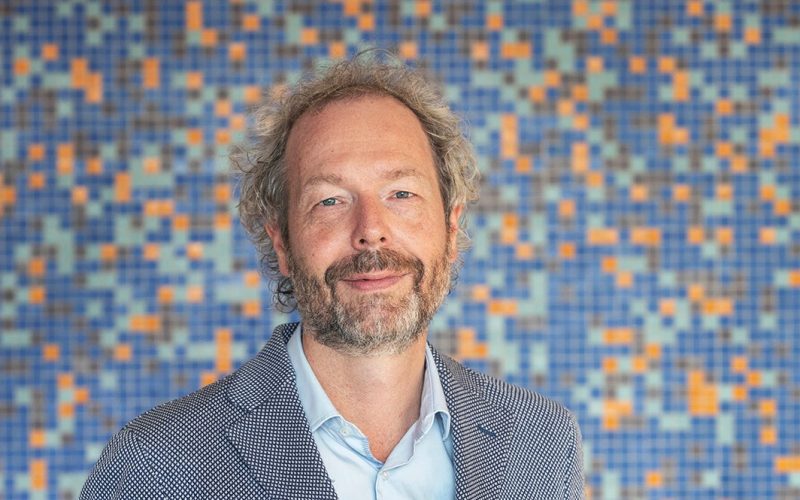New technologies, such as RNA and gene therapy, are increasingly leading to drugs for rare diseases. Unfortunately, the pharmaceutical industry usually charges exorbitant amounts for these types of drugs. For example, a one-time treatment for a child with the muscle disease SMA costs about 2 million euros. Moreover, because of the Dutch focus on cost-effectiveness, it takes at least a year, but usually longer, before expensive drugs for rare diseases are within reach for patients. And that while all rare disorders together may occur in 1 in 10 people. The Dutch approach has harsh traits and must change, argued Professor of Neurology Ludo van der Pol in his oration on Wednesday, June 8. He called on politicians to give rare diseases a place in government policy.
To illustrate the power of new treatments such as RNA and gene therapy, Van der Pol, who is also head of the Spieren voor Spieren Kindercentrum at the WKZ, showed a video about brothers Ruben and Gideon during his oration. Ruben was diagnosed with spinal muscular atrophy (SMA), a debilitating muscle disease, after he was referred because he often fell as a toddler. Gideon was born a few weeks after his brother was diagnosed with SMA. A DNA test showed he would also have SMA. Both boys were given the drug nusinersen, but Ruben’s muscle weakness remains visible despite the treatment, especially when running. Without treatment, he probably would have lost his running ability between the ages of six and 10. Gideon was born before the onset of symptoms and moves completely normally. There are also more severe variants of SMA, in which children without treatment usually die before their first birthday. For that group, early treatment is vital.
Because newborns have also been tested for SMA via heel prick since June 1, 2022, children with this muscle disease can now be treated before they develop symptoms. Recent technological developments will make the treatment of rare diseases increasingly possible in the future. A great prospect, especially considering that all rare diseases together are more common than is usually assumed. Only, there is often a lot of time between the development of expensive drugs and when they become widely available. “This is because in the Netherlands, unlike in most other European countries, determining cost-effectiveness is the main criterion for reimbursement of a drug,” Van der Pol explains. “Treatment with expensive drugs is therefore not possible until the extensive cost-effectiveness analyses and subsequent price negotiations have been successfully completed.”
The above process takes a year or more. Meanwhile, people with rare diseases live in uncertainty. The Health Care Institute may also decide to use an age limit for a new drug, for example, if there is insufficient evidence for older patients to determine effectiveness. The effectiveness of drugs for rare diseases has almost always been tested in small groups of patients: sometimes even in fewer than 100 patients at the time of market approval. An example is treatment with nusinersen. This was initially reimbursed only if the treatment was started before the age of 9.5 years, which caused panic among parents of children around 9.5 years old. There were also families where the age limit meant that one child could be treated, but not the other.
To control the cost of rare disease drugs and get them to patients faster, the professor argues for a more proactive stance by the government: “Administrators, if you are listening: if you are creating markets, such as those for rare disease drug development, you should also want to regulate them and explore alternatives to price regulation.” Cost-effectiveness analyses can give a good picture of the (un)reasonableness of prices, but rapid patient access to effective drugs should be given greater weight. Possible solutions he also gives: explore and organize innovative private-public collaborations to achieve sustainable solutions. But if that fails: if necessary, impose compulsory licenses on pharmaceutical companies, or promote “magistral preparation,” in which (hospital) pharmacies produce overpriced drugs themselves. Van der Pol also calls for price negotiations in a European context. According to him, the size of the European market means that no company would want to miss out on the European Union as a sales market.
The Spieren voor spieren Kindercentrum is the only expertise center in the Netherlands for all neuromuscular diseases in children, including SMA. Rare disorders are often life-threatening or chronically debilitating, difficult to recognize and diagnose. They are difficult to treat because multiple organs are often involved, if treatment is available at all. The centers of expertise for rare disorders (ECZAs) are then the place to turn to for patients. These expertise centers are recognized by the Ministry of Health, Welfare and Sport.
